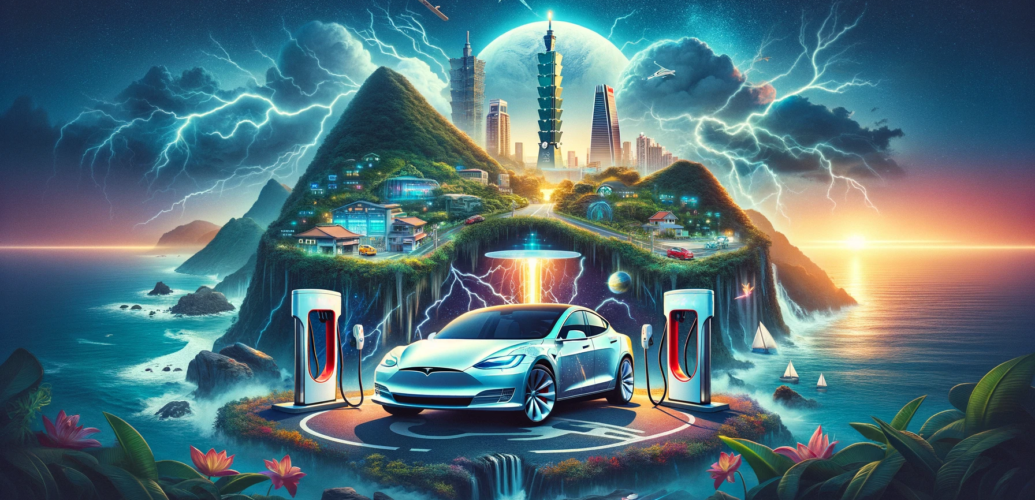This article gives you a comprehensive guide to Taiwan’s electric charging landscape, including key participants, pricing, and procedures. Feel free to bypass the intro and conclusion for the main content.
Preface
In December 2023, my girlfriend and I planned a trip to Lanyu Island off Taiwan’s southeastern coast. However, our flights were canceled because of bad weather. Instead, we went to Xiao Liu Qiu island in the southwest and circled Taiwan to conclude the trip.

After returning to Taipei, I realized that charging electric vehicles in Taiwan is quite convenient with the sheer number of charging stations across this small island. However, there are many providers to navigate. As an EV owner, I thought writing a blog post demystifying Taiwan’s EV charging landscape would be helpful, which has probably never been done in English before. Additionally, I hope to cultivate the habit of writing blog posts in 2024 (as the latest one before this was published in 2020). That’s the backdrop for deciding to write this guide.
Charging Scene in Taiwan
Providers
Taiwan has many fast-charging providers, like Tesla Supercharger, EVOasis, EVRun, U-Power, Tail, ChargingBlok, and NHOA.TCC. Some of them also offer slow charging.

Currently, EVOasis seems to have the most charging stations in operation (see below).

Noodoe and MyCharge are the rare pure slow-charging players. They work with hotels, motels, or parking lots to install charging stations on their properties.

Due to the sheer number of stations on such a small island, you’re almost guaranteed to find one within 30 minutes of driving (besides the mountainous areas).
Pricing
Most providers charge by kWh with a fixed rate, except for Tesla Supercharger, Tail, EVRun, and ChargingBlok, which set a higher rate during peak hours, usually afternoons on workdays.
For fast charging, the prices range from 5.5 NTD (~US$0.18) to 12 NTD (~US$0.39) per kWh. As for the slow one, it ranges from free (you only need to pay parking fees) to 9 NTD (~US$0.29) per kWh.
Few players and parking lots bill by the time you’ve charged. The price ranges from 20 NTD per hour (~US$0.63) to 600 NTD per hour (~US$19.03).
As a side note, some venues require you to pay a parking fee besides the charging fees. Additionally, some companies charge high fees if you don’t move your car after a grace period (10~15 minutes). For instance, the Tesla Supercharger deducts 15 NTD (~US$0.48) per minute until you move your car.
Steps to Charge
Most companies have their own apps. To start charging, install their app, add a credit card, plug in the charger, scan the QR code on the charging stand/kiosk with the app, and start charging your electric car.

Some players like EVRun, NHOA.TCC, and ChargingBlok opt for Line Official Account as their user-facing UI. Line Official Account is like an app on Line, the dominant messaging platform in Taiwan. It’s like a channel on WhatsApp or Telegram for accessing a charging service. The user flow is similar to an app, but you add the provider’s Line Official account instead of installing an app.
Connector Type
TPC, CCS2, and CCS1 have similar market share in Taiwan for fast-charging. Here’s the market breakdown from ChargeSmith’s 2023 H1 report:

Almost every station I’ve ever visited supports CCS1 and CCS2, except for the Tesla Supercharger. Tesla Supercharger only supports TPC and CCS2 as Tesla has adopted CCS2 over TPC since 2021 Q1 in Taiwan. Some stations provide adapters for CHAdeMO users, although I heard that the charging speed is drastically reduced with an adapter.

As for slow charging, most venues in Taiwan use J1772 (see the pie chart below), as it’s the government’s standard for public parking lots with charging stations. Nowadays, only Tesla’s Destination Chargers use Type2.

Epilogue
Overall, I spent 966 NTD (~$30.64) on charging during the entire trip.
I use NHOA.TCC and EVOasis in this trip. The former has a 3-day pass for 599 NTD (~$19) for all of its stations in Eastern Taiwan, while the latter is the cheapest among those with multiple locations with the right credit card.
If you don’t intend to stay in Eastern Taiwan for multiple days, you probably only need to use EVOasis as now they have a promotion campaign for its Eastern Taiwan venues (4.8 NTD, or ~US$0.15, per kWh).
